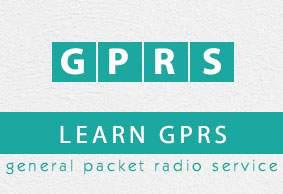GPRS - Overview
General Packet Radio System is also known as GPRS is a third-generation step toward internet access. GPRS is also known as GSM-IP that is a Global-System Mobile Communications Internet Protocol as it keeps the users of this system online, allows to make voice calls, and access internet on-the-go. Even Time-Division Multiple Access (TDMA) users benefit from this system as it provides packet radio access.
GPRS also permits the network operators to execute an Internet Protocol (IP) based core architecture for integrated voice and data applications that will continue to be used and expanded for 3G services.
GPRS supersedes the wired connections, as this system has simplified access to the packet data networks like the internet. The packet radio principle is employed by GPRS to transport user data packets in a structure way between GSM mobile stations and external packet data networks. These packets can be directly routed to the packet switched networks from the GPRS mobile stations.
In the current versions of GPRS, networks based on the Internet Protocol (IP) like the global internet or private/corporate intranets and X.25 networks are supported.
Who owns GPRS ?
The GPRS specifications are written by the European Telecommunications Standard Institute (ETSI), the European counterpart of the American National Standard Institute (ANSI).
Key Features
Following three key features describe wireless packet data:
The always online feature - Removes the dial-up process, making applications only one click away.
An upgrade to existing systems - Operators do not have to replace their equipment; rather, GPRS is added on top of the existing infrastructure.
An integral part of future 3G systems - GPRS is the packet data core network for 3G systems EDGE and WCDMA.
Goals of GPRS
GPRS is the first step toward an end-to-end wireless infrastructure and has the following goals:
- Open architecture
- Consistent IP services
- Same infrastructure for different air interfaces
- Integrated telephony and Internet infrastructure
- Leverage industry investment in IP
- Service innovation independent of infrastructure
Benefits of GPRS
Higher Data Rate
GPRS benefits the users in many ways, one of which is higher data rates in turn of shorter access times. In the typical GSM mobile, setup alone is a lengthy process and equally, rates for data permission are restrained to 9.6 kbit/s. The session establishment time offered while GPRS is in practice is lower than one second and ISDN-line data rates are up to many 10 kbit/s.
Easy Billing
GPRS packet transmission offers a more user-friendly billing than that offered by circuit switched services. In circuit switched services, billing is based on the duration of the connection. This is unsuitable for applications with bursty traffic. The user must pay for the entire airtime, even for idle periods when no packets are sent (e.g., when the user reads a Web page).
In contrast to this, with packet switched services, billing can be based on the amount of transmitted data. The advantage for the user is that he or she can be "online" over a long period of time but will be billed based on the transmitted data volume.


